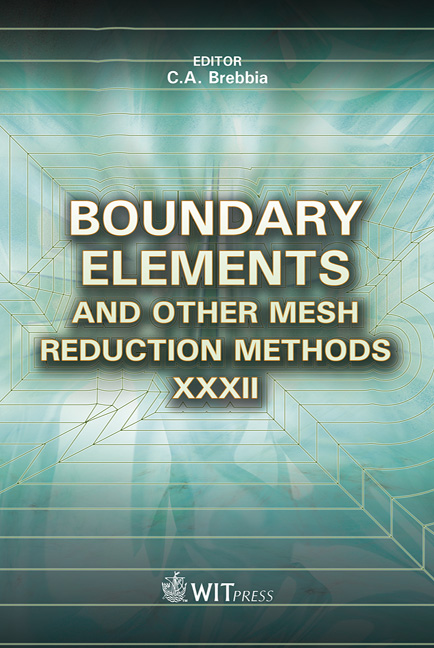Free And Forced Vibrations Of The Shells Of Revolution Interacting With The Liquid
Price
Free (open access)
Transaction
Volume
50
Pages
9
Page Range
203 - 211
Published
2010
Size
365 kb
Paper DOI
10.2495/BE100181
Copyright
WIT Press
Author(s)
E. Strelnikova, E. Yeseleva, V. Gnitko & V. Naumenko
Abstract
The coupled problem of free and forced vibration of shells of revolution interacting with the liquid is under consideration. The problem was reduced to singular integral equations. The main objective of this paper is to present a detailed study of free and forced vibrations of a shell of revolution with an arbitrary meridian. For solving the boundary value problem of determining the fluid pressure on the shell, the boundary element method (BEM) is used. This method substantially reduces the computer time for the analysis and reveals new qualitative possibilities in modeling the dynamic behavior of shells. Numerical investigations of natural frequencies and mode shapes of the cylindrical tank with the incompressible fluid have been carried out. The behavior of structures subjected to a dynamic loading and interacting with the fluid is investigated. Keywords: free vibrations, forced vibrations, fluid-shell interaction, boundary and finite element methods. 1 Introduction Fluid-structure interaction has been studied extensively in the last decade [1–4]. The urgency of the problem is connected with wide application of the liquid storage tanks in engineering. The liquid storage tanks are important components of lifeline and industrial facilities. They are critical elements in municipal water supply and fire fighting systems, and in many industrial facilities for storage of water, oil, chemicals and liquefied natural gas, etc. Several complexities are involved in the strength analysis of such tanks. If the excitation frequency is near the natural one, the high dynamic pressures may be produced on the tank walls due to the resonance. So calculation of the natural
Keywords
free vibrations, forced vibrations, fluid-shell interaction, boundary and finite element methods





